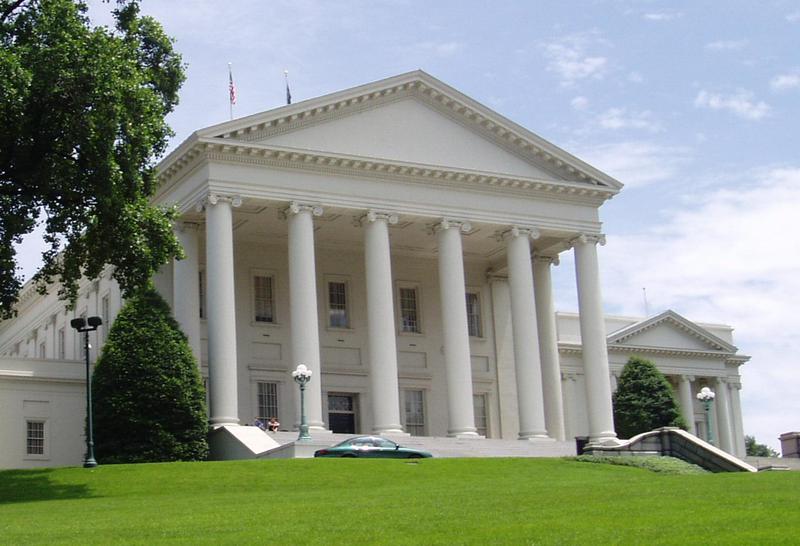by Zippia.com
Ever wonder where the best place to find a job – not just retire – after your discharge is?
Even with a recent upward swing in the economy, today’s job market is still tough – but veterans have a relative advantage. A Bureau of Labor report in early 2017 shows national veteran unemployment rates continuing to improve – only 3.9 percent are unemployedcompared to the non-veteran 4.9 percent.
Veterans don’t just benefit from a civilian sector trying to pay it forward and express gratitude – Employers know that hiring a vet means hiring a trustworthy employee who works hard and plays hard with attention to detail in both areas.
This faith is worth infinitely more than the priority seating on airlines, trust me.
But with the advantages of military training and discipline come the challenge of assimilation into the civilian workforce. While employers recognize veterans’ work ethic and ability to get it done to high standards, the potential skills mismatch and acclimation issues can work against you in the hiring process.
So we took a look at the numbers that don’t lie – unlike some recruiters – to show you which states make it easiest to be in the 70 percent of veterans who report an easy transition to the civilian workforce.
- Alaska
- Hawaii
- Virginia
- New Hampshire
- Utah
The top five might be surprising, given Hawaii’s notoriety for being expensive and Utah’s infamy for being Utah.
Remember though, we’re ranking states that present the best job opportunities for vets who are entering the workforce for the first time as civilians – not ideal places for pensioners.
Read on to see what it takes for a state to make the cut.
How We Came Up with the Scores
We took six employment and income factors affecting working veterans and weighted them to come up with an overall score – the lower the index, the better.
In crafting our criteria, it was important to us that we focused on working veterans working of every rank and branch – and also that we didn’t leave out rural communities.
This index obviously doesn’t include every factor – but if you’re going to whine about that, then you’re probably the one who bitched when you failed your PT test because it didn’t account for your vertical jump as they taped your neck and waist.
1. Employment rate — First, we looked at the Bureau of Labor Statistics data on veteran unemployment rates by state to compare them to the non-veteran population.
Because our ranking focuses on working veterans of all ranks – not just retirees or officers – we feel that this is the strongest factor— 4 points
2. Wages — We assigned points to veteran median incomes by state, because having a fully employed veteran workforce would be great and all – just not as great if they were all making minimum wage — 2 points
3. Cost of Living — Similarly, it wouldn’t really benefit Our Nation’s Finest if a case of beer cost $49 – so we factored in the cost of living for each state — 2 points
4. Training and Education Benefits — We also analyzed how much each state got from the VA for education and employment resources per veteran.
I’m not going to try to make any weak “train as you fight” jokes here – this is important to veterans who plan to live and work beyond the urban centers with naturally high employment rates — 2 points
5. Veteran Population — Then we used 2014 US Census data on veteran populations to determine what percentage of each state’s population was made up of veterans.
A large presence of veterans makes employers more familiar with veterans’ potential – and you’ll want to make sure you surround yourself with people who know that “So no shit there I was” is the right way to start a story — 1 point
6. Number of VA Hospitals – 1 point — Even though this ranking focuses on veterans of working age, you’ll still want access to VA medical facilities.
For this index, we looked at the number of VA Medical Centers – not outpatient clinics – in each state per million residents.
This skews it in the favor of states with lower populations, but not to a large degree. It doesn’t impact your job outlook, so it gets less weight — 1 point
1. Alaska

Assuming you’ve never been bothered by a long flight to visit Mainland USA, then Alaska is – overall – the best place to find employment as a veteran with one of the lowest veteran unemployment rates and highest median incomes in the country.
It’s also got no state income tax, and veterans also get a 25 percent discount on state land purchases for recreational and residential property. Vets qualify for home financing at a lower rate too.
Safety brief: don’t screw with the bears – no one’s going to buy your “So there I was…” story, even if it actually happened.
2. Hawaii

The Aloha State might be a long flight as well, but family might be a little more likely to make the trip. It combines one of the lowest vet unemployment rates in the country with one of the highest median incomes for veterans – $45,000 to $30,000 for non-veterans.
That almost offsets it having the worst cost of living and high rate of homeless veterans. Then again, almost 18 percent of Hawaii’s total employment is made up of veterans, active duty and Department of Defense civilian personnel making it a military-friendly place to live.
They’ll understand the struggle.
3. Virginia

Virginia is a military state, pure and simple – according to the data. When you look at VA’s large number of VA facilities per veteran, the second-most VA spending per veteran, and Virginia Transition Assistance Program (VTAP) you can see that it’s a place for vets.
Data shows that veterans tend to stick close to where they were assigned – and you can see it here with one of the highest percentages of veterans, one of the low unemployment rates and the second-highest median income in the country.
It also has the highest percentage of military vanity license plates in the country. That’s kind of neat too, right?
4. New Hampshire

New Hampshire brings to the table the second-lowest veteran unemployment rate and a high median income for veterans. Combined with no state income tax and a high density of fellow former military, you’ve got the only state in the Northeast to crack the top 15.
And while it’s known mostly for its gorgeous, rugged vistas, it’s also home to several titans of industry: Pitco Frialators, Badger Balm, Duncraft Bird Feeders, and Segway.
5. Utah

Utah’s low unemployment rate for veterans and high median income yields it a high spot as well – large part of this could be due to the $843 per veteran the state gets from the VA.
Utah also has the Accelerated Credentialing Program (ACE) – vets can get credit for their military work when they apply for a state license or a college education. Also, Purple Heart veteran, you don’t pay any tuition at state schools or taxes and fees on your car.
All of that – plus Dairy Keen and fry sauce – almost make living in a state with those aggressively stupid liquor laws worth it.
Square Away Your Resume, Fobbit
You may have noticed by now that the trend is low veteran unemployment followed by a combination of low cost of living and high median income. Some states simply dominate in certain areas and get points that way, while some are solid across the board.
The good news is that veteran employment rates are up, and even if you have to live in North Dakota, at least it’s not South Dakota — am I right?
Detailed Ranking Of The Best States For Veterans To Get Jobs
| Rank | State |
|---|---|
| 1 | Alaska |
| 2 | Hawaii |
| 3 | Virginia |
| 4 | New Hampshire |
| 5 | Utah |
| 6 | Texas |
| 7 | South Dakota |
| 8 | Georgia |
| 9 | Tennessee |
| 10 | Maryland |
| 11 | Washington |
| 12 | Arkansas |
| 13 | Indiana |
| 14 | Vermont |
| 14 | New Mexico |
| 16 | Missouri |
| 17 | Colorado |
| 18 | Arizona |
| 19 | Delaware |
| 20 | North Dakota |
| 21 | Rhode Island |
| 22 | Nebraska |
| 23 | Maine |
| 24 | Michigan |
| 25 | Nevada |
| 26 | Idaho |
| 27 | Alabama |
| 28 | Oklahoma |
| 29 | Florida |
| 30 | Kentucky |
| 31 | North Carolina |
| 32 | Wyoming |
| 33 | Connecticut |
| 34 | Iowa |
| 35 | Kansas |
| 36 | South Carolina |
| 37 | Montana |
| 38 | Mississippi |
| 39 | Massachusetts |
| 40 | Ohio |
| 41 | West Virginia |
| 42 | New Jersey |
| 43 | Louisiana |
| 44 | California |
| 45 | New York |
| 46 | Illinois |
| 47 | Wisconsin |
| 48 | Oregon |
| 49 | Pennsylvania |
| 50 | Minnesota |
ATTENTION READERS
We See The World From All Sides and Want YOU To Be Fully InformedIn fact, intentional disinformation is a disgraceful scourge in media today. So to assuage any possible errant incorrect information posted herein, we strongly encourage you to seek corroboration from other non-VT sources before forming an educated opinion.
About VT - Policies & Disclosures - Comment Policy



